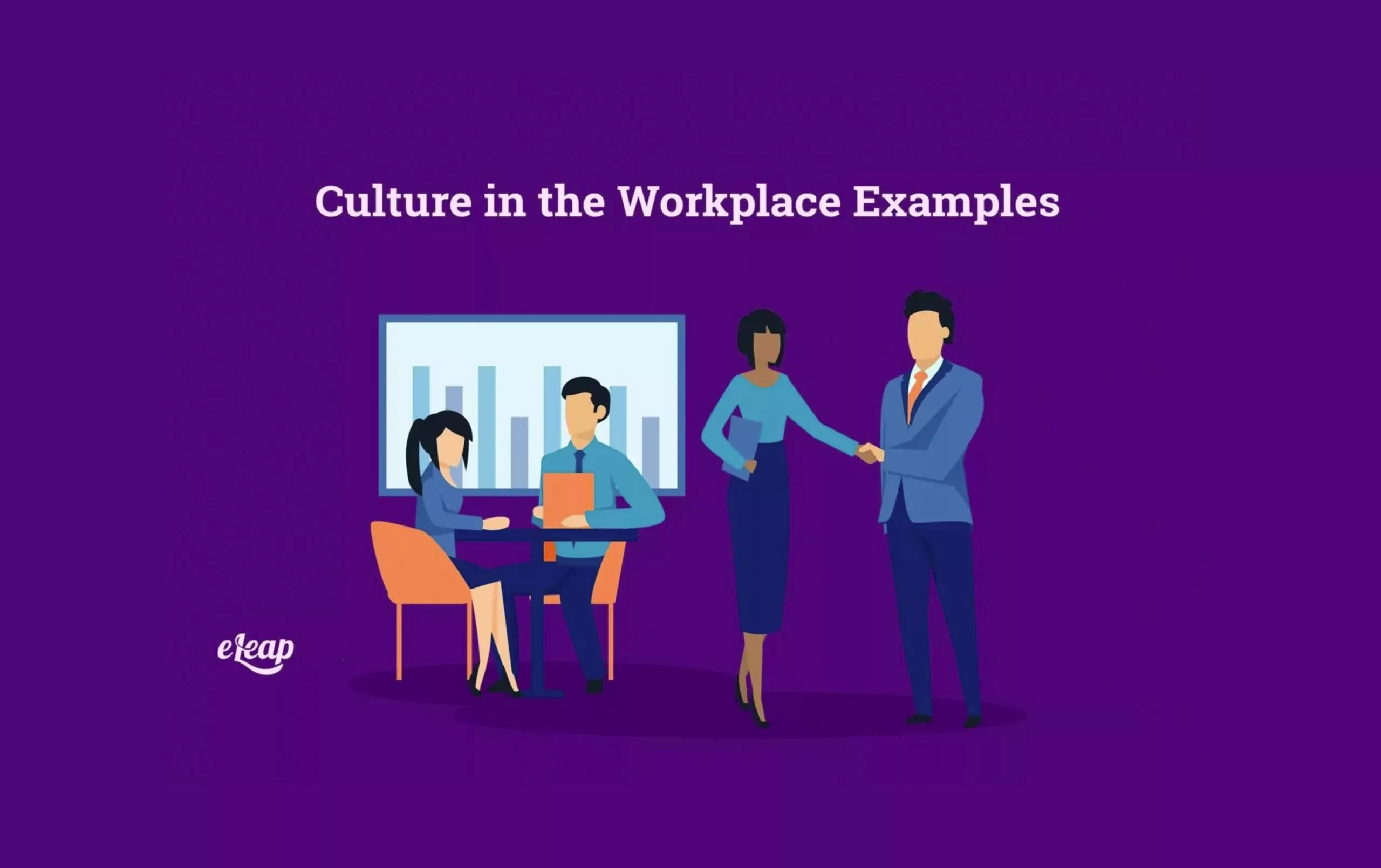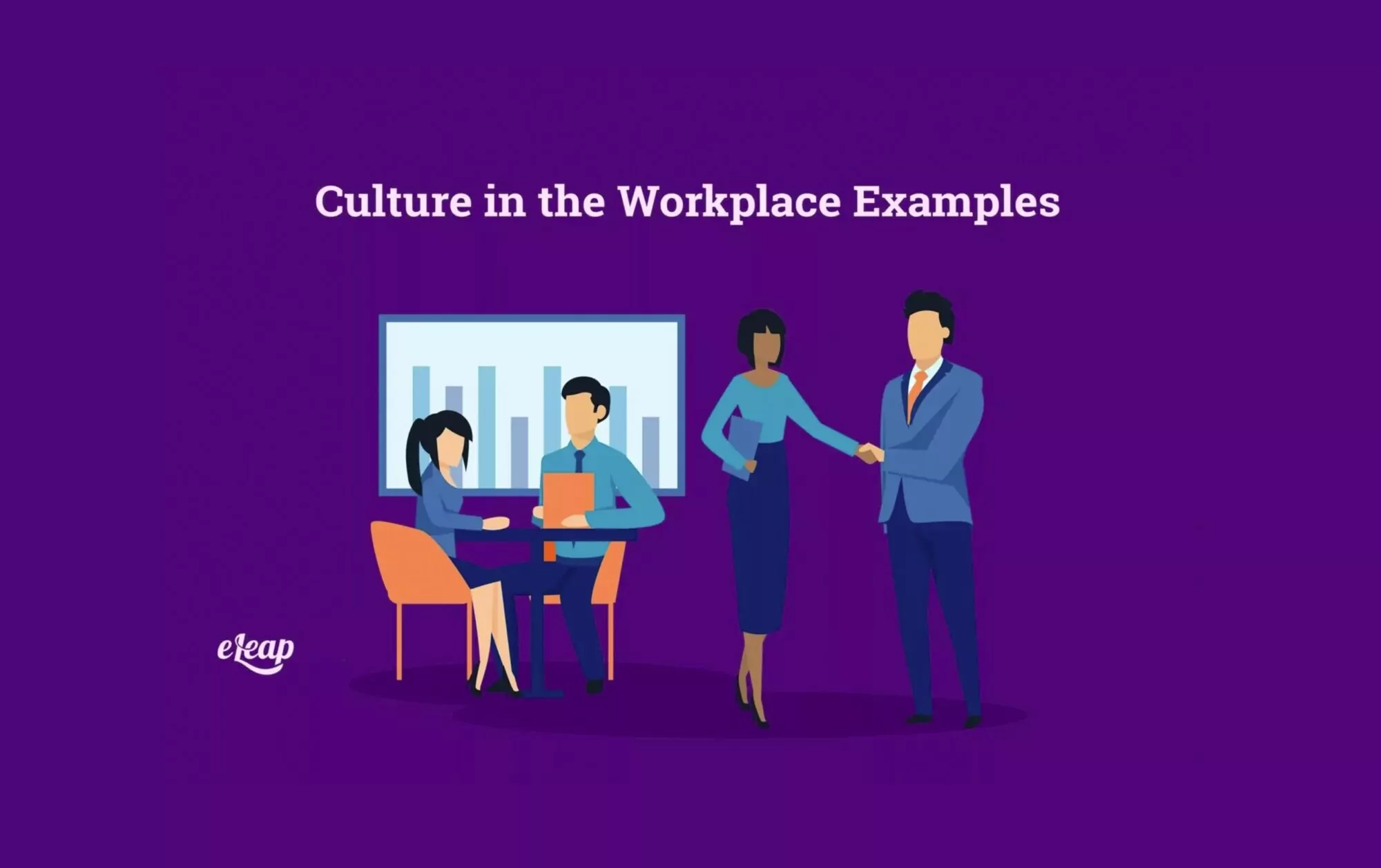Culture in the Workplace Examples

Culture in the workplace examples are front and center these days. People opt to join a team because of it, and it’s also the main factor in whether or not workers decide to stay on the team.
The secret to obtaining and keeping a true competitive advantage as a great place to work hinges a lot on culture in the workplace.
However, defining a company’s culture can be exceedingly challenging. Culture is an elusive trait that belongs in a category alone, unlike wages, benefits, and promotions.
Setting culture in the workplace examples in their proper context will help you build a solid foundation for your business.

What Culture in the Workplace Examples Are Evident on Your Team?
Before we get into specific instances, it’s critical to understand what constitutes culture. Not just any culture, we mean the kind that generates long-term financial advantages like productivity, innovation, and creativity for managers and team members.
Although organizational culture is primarily a matter of interpretation, successful company cultures frequently have the following characteristics:
Independence:Successful businesses recognize that pride in one’s job is one of the biggest motivators of productivity. Without micromanagement or hand holding, their staff members have the freedom to develop and operate independently.
Competitive Drive:High-performing businesses prioritize output over input. Peers are frequently present at celebrations of accomplishments, and they are encouraged to congratulate one another as they hit significant milestones. There is a competitive streak, but it never undermines others’ efforts or looks to demean anyone.
Motivation:People who work in an environment with a strong culture bond with a shared goal. You might think that goal hinges on the financial aspect, but it doesn’t. True change occurs when each person’s aims coincide with the company’s.
It’s important to understand that while these traits are present in companies with successful cultures, they don’t look the same across the board.
In the end, there is no secret recipe for transforming the culture of your business from excellent to exceptional. An employee who suffers from one form of corporate culture may fit in quite well elsewhere.
The culture that works well for one firm may not be what works for another. It’s also important to understand that your company culture may evolve.
How Employee Engagement Impacts Company Culture
Science has repeatedly demonstrated that intrinsic drive rather than the financial reward is the key to good performance. And engagement is the key to releasing inner motivation.
Highly engaged workers will be a sign of a good corporate culture. In contrast, disengaged workers may result from a bad culture. They also may become disengaged if a culture is inadequately managed or defined.
Wonderful things can occur if you concentrate on developing an engaged culture. Research demonstrates that businesses concentrating on developing cultures characterized by meaningful work, high levels of employee engagement, and organizational fit will outperform their competitors.
Culture in the Workplace Examples to Emulate
Individual superstars rarely emerge inside teams at organizations noted for their inventiveness. Why? Since everyone has value in these cultures. Every employee has a voice, and every team works together to achieve a common goal.
You may learn a lot from the businesses that put a high emphasis on culture. Remember, though, that what works for one company might not work for another.
In reality, firms that operate under the radar seem to concentrate on creating genuinely amazing cultures and eschewing vanity metrics.
Some culture in the workplace examples of companies that focus on their priorities are as follows:
Zappos:When considering new staff, the first step is a cultural fit interview. This has a 50% rating on whether or not the candidate moves to the next level. After their first week of training, new hires have the option to leave the company for $2,000 if they determine it’s not the right fit.
Employees earn raises for their performance on skills exams, not because of office politics. The budget includes funds for fostering employee camaraderie and culture.
With the Zappos approach to business culture, amazing customer service and a strong brand will happen independently. Great perks and an enjoyable workplace committed to making customers happy are their starting points.
Warby Parker:Since 2010, Warby Parker has produced and sold prescription eyewear online. The company can maintain low costs by avoiding the middleman and selling straight to clients.
Warby Parker aspires for a team devoted to culture, which is one reason for their success. Their team environment encourages shared meals, team events, and planned activities with the employee in mind. By putting a positive culture front and center, there is never any question of where the company stands on the matter.
They use techniques to ensure that the entire staff works well together, such as requiring everyone to assist in maintaining clean break spaces or sending random employees to lunch together.
REI:Outdoor enthusiasts have traditionally looked to REI for top-notch equipment. Employees at REI, a cooperative where earnings go to member-owners, concur that remarkable things occur here, even outside the company’s well-known camping and outdoor goods. REI aims to provide consumers and workers with the tools they need to enjoy the outdoors while fostering environmental stewardship.
REI firmly attributes employee success to the fact that they “give life to their purpose,” as stated by the corporation. What sets REI apart is that it allows employees who value the outdoors to engage with its culture fully.
Employees who submit a plan for a difficult outdoor trip may be eligible to receive equipment through “challenge grants.” Employees can ask anonymous questions at regular town hall-style meetings to assist management in better grasping what’s going on in the business.
Culture in the Workplace Examples to Avoid
Imagine a plant in a hazardous environment; the plant won’t grow and will eventually perish. It’s not that different from an unhealthy business culture. While it won’t technically kill anyone, it hinders workers from thriving, doesn’t bring out the best in them, and eventually makes them want to look for work elsewhere.
A toxic work environment refers to outmoded work practices that maximize productivity in employees, such as the obligation to work from the office.
It entails inexpensive bonuses and perks for the business to provide, yet it is difficult for employees to enjoy. It entails treating workers less as individuals with their own lives and families and more as tools to meet the needs of the business.
Workplace “illnesses,” such as poor team cohesion, increased absences and tardiness, poorer productivity, and high turnover, are caused by a toxic work environment. You want to avoid having a harmful or toxic culture at all costs. Even the most motivated employees can’t realize their full potential or advance the business without great leadership, regardless of how talented the people you hire are.
Telltale Signs That Your Culture Is Struggling
You need quantitative insights if you’re serious about understanding the existing culture of your business. Without evidence, you can only rely on your intuition, which increases the likelihood that your efforts to create an engaged culture will be unsuccessful.
Employee input is the secret to figuring out which culture in the workplace examples are best for your business. You’ll be able to confidently replicate or improve your culture if you collect precise information from your personnel.
Which kind of culture is dominant at your company? Does it function well for your staff? Or are there elements that are having the opposite effect? Unless you inquire, you won’t know!
Questions to Ask to Improve Company Culture
What components of your work do you enjoy the most?
Understanding what makes your employees happy is crucial to your company’s culture and, eventually, to your bottom line. You can assist employees in discovering new procedures and practices that support their development and aspirations by asking them to focus on the best aspects of their current roles. By doing this, you can raise employee happiness, which in turn increases customer satisfaction.
What are your thoughts on company policies?
This question ensures that everyone in the organization is aware of these principles. Employees will recognize how the company values come across through internal choices and contacts with clients since they know that this subject can come up frequently. This value-recognition process may also serve as the inspiration for personnel decisions and behavior.
What steps do you think we need to change or enhance?
Processes designed to ensure consistency and efficiency make the team feel comfortable. Your team is on the front lines of these processes. Giving your staff a voice in the process empowers them. It keeps them always considering methods to enhance the current procedures. It can inform you of the business-running processes’ positive, negative, and ugly aspects.
When do you feel most motivated?
Employers might gain insight into what motivates their employees by asking this question. What motivates one individual may not be what motivates another. To meet these particular needs, you must understand what drives your employees and cultivate a flexible organizational culture.
How do you talk about your job and the company with friends and family?
It signifies a strong culture when all your employees share the same narrative. Although the chances of this are quite slim, you can identify the flaws in your company’s story from the various responses and strive to strengthen them.
The eLeaP continuous performance management system provides organizations with powerful options to attract and retain high caliber team members.